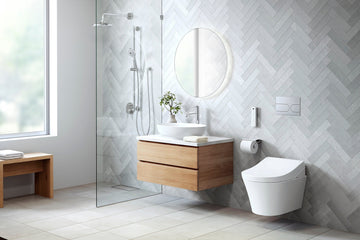In an age where technology intertwines seamlessly with everyday life, the concept of pay per use smart toilets emerges as a revolutionary step towards enhancing urban sanitation. As cities grow more populated and technology advances, the demand for efficient, hygienic, and accessible public restrooms has never been more significant.

What Are Pay Per Use Smart Toilets?
At the heart of this innovation lies the fusion of technology and necessity. Smart toilets equipped with advanced sensors and automated systems offer a unique user experience. The 'pay per use' model ensures that these facilities are maintained to the highest standards, providing a hygienic and sustainable solution. For industry QA professionals, this represents a shift in how public amenities can be managed and monitored for quality assurance.
Users are charged a small fee for access, ensuring funds are available for regular maintenance and technological upgrades. This model not only maintains the cleanliness of the facilities but also reduces the burden on municipal resources.
The Technology Behind Smart Toilets
Modern smart toilets integrate a variety of technologies, including automated cleaning systems, occupancy sensors, and even IoT-enabled devices that monitor usage and maintenance needs. This data-driven approach allows for real-time updates and predictive maintenance, ensuring the facility remains operational and clean.
According to an external report, the future of toilet technology is leaning heavily on these smart innovations, providing insights into user patterns and helping to conserve water and energy.
Benefits of the Pay Per Use Model
The pay per use model offers numerous advantages, particularly in urban settings. By integrating payment systems directly into the toilet's infrastructure, cities can effectively manage and allocate resources. This ensures that facilities are always in top condition, contributing to a better user experience.
Furthermore, this model encourages responsible usage. With a nominal fee attached, users are more likely to treat the facilities with respect, reducing vandalism and misuse. It also ensures that the facilities are accessible to all, as the fee system can be adjusted based on socio-economic factors.
Challenges and Considerations
Despite the benefits, implementing pay per use smart toilets comes with its own set of challenges. For one, there is the initial cost of installation and the ongoing need for technological updates and maintenance. Additionally, there is the challenge of ensuring that these facilities remain accessible to all, particularly in low-income areas.
Industry professionals must also consider the privacy and security of users, ensuring that data collected is handled responsibly and ethically. As the technology continues to evolve, maintaining a balance between innovation and accessibility will be crucial.
For more insights into innovative toilet technologies, you can explore articles on innovative toilet payment apps and space toilet innovations by NASA.
The Future of Smart Sanitation
As cities continue to expand, the need for efficient and sustainable sanitation solutions becomes increasingly important. The integration of smart toilets into urban infrastructure represents a forward-thinking approach to public hygiene. By embracing this technology, cities can reduce their environmental footprint, manage resources more effectively, and provide a higher standard of living for their residents.
Industry QA professionals have a critical role to play in this transition, ensuring that these systems meet rigorous quality standards and provide reliable service to the public.
For those interested in learning more about the latest innovations in toilets, the tiny house toilet innovations article provides a deeper dive into how these technologies are being adapted for smaller living spaces.

FAQs
What are the primary benefits of smart toilets?
Smart toilets offer enhanced hygiene, resource efficiency, and a modern user experience. They integrate advanced technologies to provide self-cleaning features, water conservation, and data-driven maintenance.
How does the pay per use model work?
The pay per use model charges users a nominal fee for access to the facilities. This fee helps fund maintenance and upgrades, ensuring the toilets remain in excellent condition and accessible to all.
Are there privacy concerns with smart toilets?
Yes, data privacy is a significant concern. It is essential that data collected by smart toilets is handled responsibly, with strong privacy measures in place to protect user information.
This article contains affiliate links. We may earn a commission at no extra cost to you.





